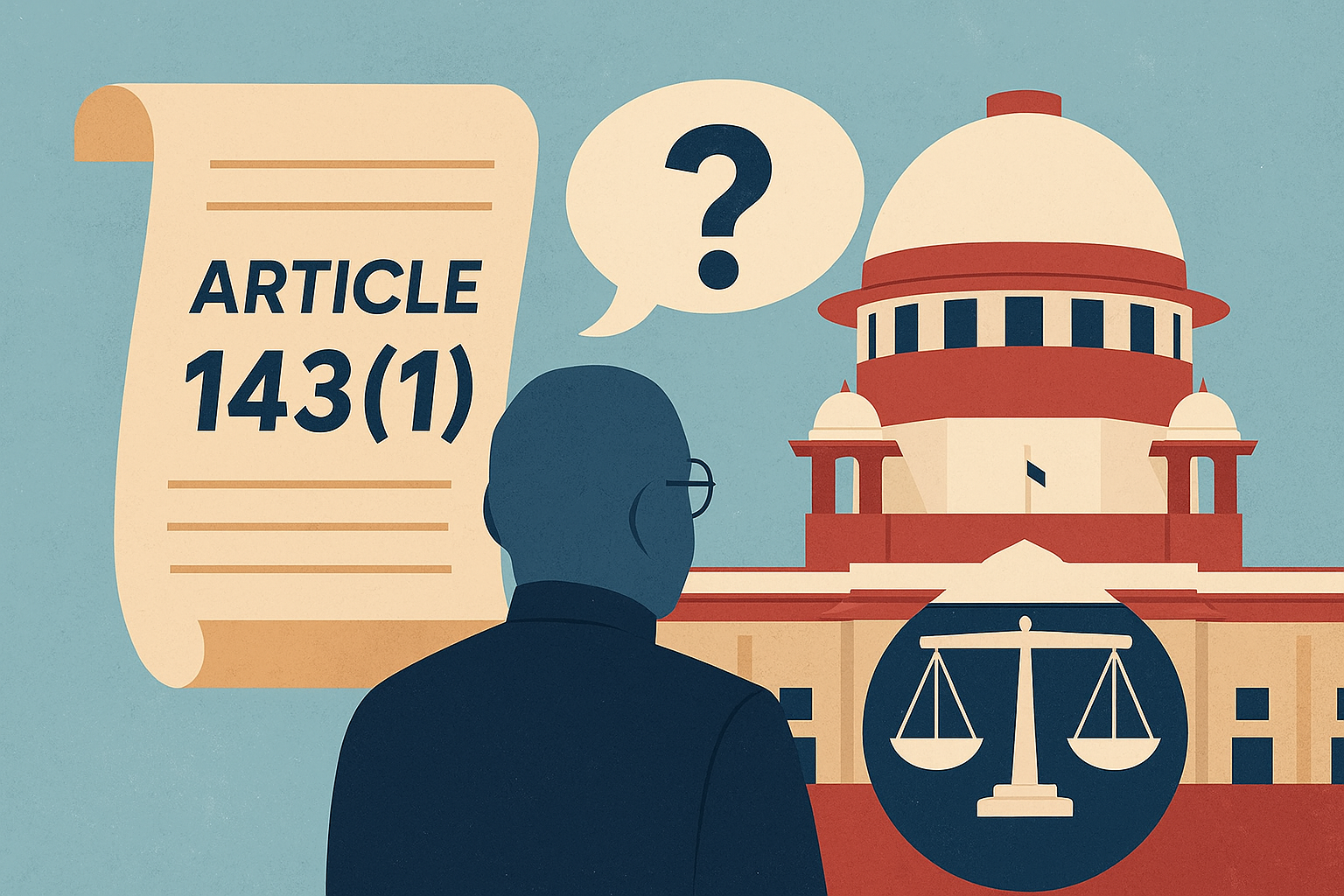How the Supreme Court Answered the President’s Article 143(1) Questions
Hindustan Times

1. Introduction and Context
This article analyses the Supreme Court’s response to the President’s Article 143(1) reference, which sought clarity on the constitutional powers of Governors and the President regarding assent to state Bills.
The issue is rooted in federalism, constitutional checks and balances, and separation of powers, making it highly relevant to UPSC GS-II (Polity & Governance) and Indian Constitution.
The Court’s clarifications aim to curb misuse of gubernatorial discretion and ensure smoother legislative functioning in states.
2. Key Arguments Presented
a) Limits on Governor’s Discretion
- Under Article 200, the Governor may assent, withhold, return (except Money Bills), or reserve the Bill for the President.
- The Court clarified that this discretion is not absolute.
- Governor cannot delay Bills indefinitely — judicial scrutiny can apply if there is misuse.
b) President’s Powers under Article 201
- President must also act within reasonable timelines.
- Arbitrary delays by the Union Executive are unconstitutional and defeat legislative intent.
c) Judicial Reviewability
- The final act of giving assent may not be reviewable.
- However, the process leading to assent, including delays, is subject to judicial review.
- This distinction preserves separation of powers while preventing executive abuse.
d) Federalism and Constitutional Morality
- The Court reaffirmed that the Governor’s and President’s actions must uphold:
- Federal balance
- Aid and advice of Cabinet
- Spirit of democracy
- Article 143 need not be invoked for routine constitutional questions.
e) A Bill Becomes Law Only After Assent
- Legislative approval alone is not enough; assent is essential for validity.
- Bills withheld or delayed remain non-operative.
3. Author’s Stance
- Neutral and explanatory in tone.
- Aligns with the Supreme Court’s constitutional reasoning.
- Highlights judicial oversight as a tool to prevent executive misuse.
- Emphasizes restoration of federal balance and constitutional morality.
4. Possible Biases
a) Pro-Judiciary Bias
- Favors the Court’s role as guardian of the Constitution.
- Highlights judicial corrections over executive functioning.
b) Critical of Executive Delays
- Subtle critique of Governors who delay Bills without justification.
Both biases align with typical constitutionalist editorial perspectives.
5. Pros and Cons of the Supreme Court Clarifications
Pros
- Strengthens federalism
Limits Governor’s interference in state legislatures. - Promotes accountability
Delays by Governors or President become judicially examinable. - Reduces ambiguity
States now have clearer procedural guidelines for assent. - Enhances democratic functioning
Prevents unelected authorities from obstructing elected governments.
Cons
- Risk of judicial overreach
Courts prescribing timelines may blur boundaries between judiciary and executive. - Political friction
Could intensify Centre-State disputes over gubernatorial conduct. - No strict timelines provided
Leaves room for continued ambiguity unless implemented rigorously. - Increased litigation
States may challenge assent delays more aggressively.
6. Policy Implications
a) Cooperative Federalism Strengthened
- Enhances autonomy of state governments.
- Reduces misuse of gubernatorial office as a political instrument.
b) Legislative Reforms Possible
- Parliament may consider amending Articles 200 and 201 to insert clear timelines for assent.
c) Administrative Discipline
- Both Governors and the Union must act promptly and transparently.
d) Rise in Constitutional Litigation
- States may increasingly move courts against assent delays.
7. Real-World Impact
Short-Term
- States like Tamil Nadu, Kerala, Telangana, Punjab may immediately benefit, as they’ve faced prolonged assent delays.
- Governors likely to expedite pending Bills.
Long-Term
- Redefined Centre–State relations.
- Strengthening of constitutional governance and democratic processes.
- Reduced political misuse of constitutional offices.
- Reinforces India’s institutional credibility.
8. UPSC GS Paper Alignment
GS-II (Polity)
- Governor’s powers
- President’s assent
- Judicial review
- Federal structure
- Separation of powers
- Constitutional morality
GS-IV (Ethics)
- Accountability
- Transparency
- Ethical conduct in public office
Essay
Themes:
- Federalism in India
- Role of judiciary in democratic governance
- Constitutional morality & institutional checks
9. Balanced Summary
The article clearly outlines the Supreme Court’s nuanced interpretation of gubernatorial and presidential powers under Articles 200 and 201.
The verdict enhances accountability, strengthens federalism, and restricts arbitrary executive discretion.
However, concerns about judicial overreach and potential Centre-State friction remain.
Still, the clarity provided is a major step toward ensuring that constitutional offices operate within democratic limits and do not obstruct elected governments.
10. Future Perspectives
- Parliament may codify strict timelines for assent.
- Standard operating procedures for Governors and Raj Bhavan secretariats may be institutionalized.
- States may improve legislative routing and documentation for assent.
- Judicial monitoring could expand if delays persist, though with caution to prevent institutional conflict.
